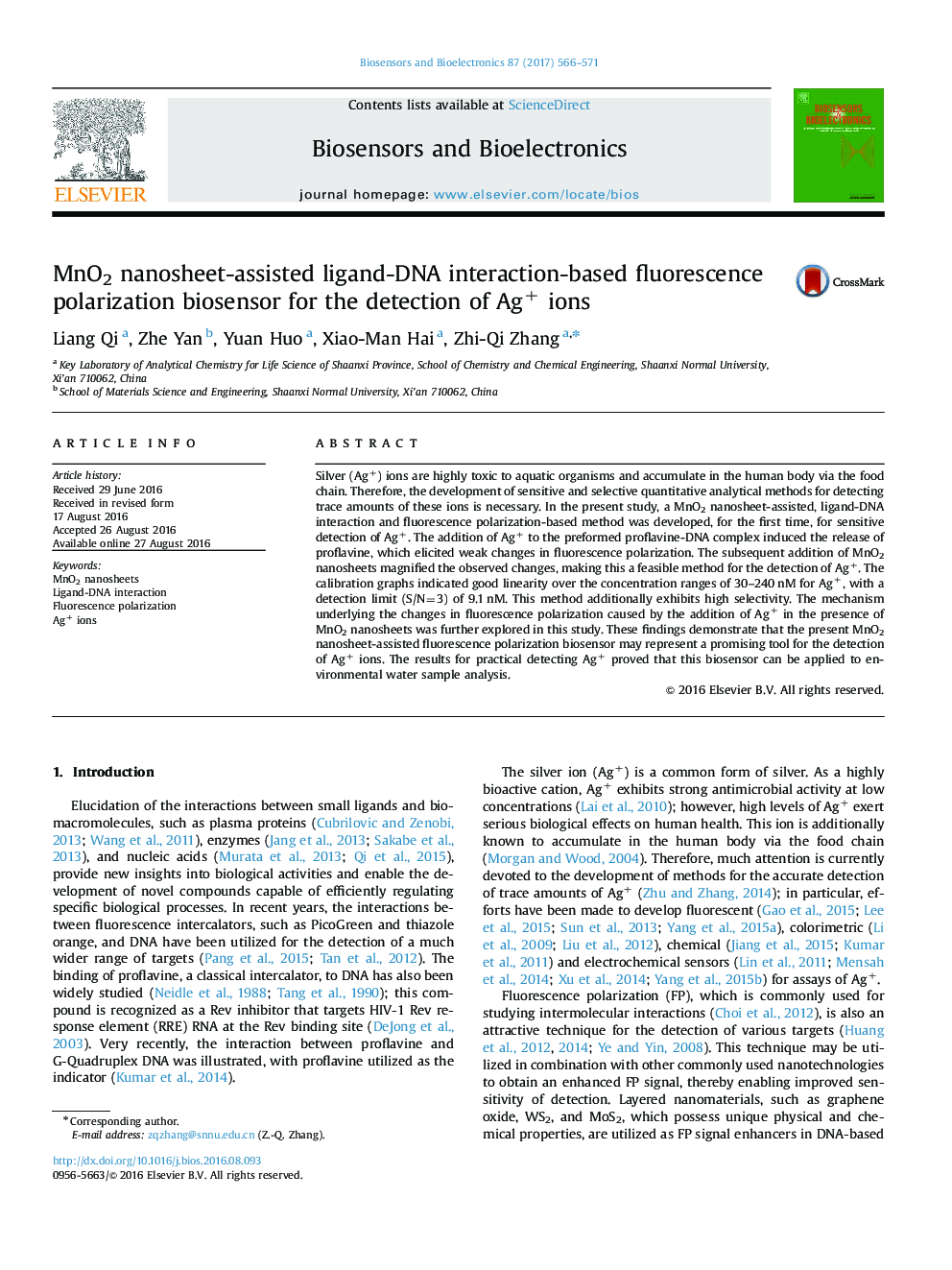| Article ID | Journal | Published Year | Pages | File Type |
|---|---|---|---|---|
| 7230242 | Biosensors and Bioelectronics | 2017 | 6 Pages |
Abstract
Silver (Ag+) ions are highly toxic to aquatic organisms and accumulate in the human body via the food chain. Therefore, the development of sensitive and selective quantitative analytical methods for detecting trace amounts of these ions is necessary. In the present study, a MnO2 nanosheet-assisted, ligand-DNA interaction and fluorescence polarization-based method was developed, for the first time, for sensitive detection of Ag+. The addition of Ag+ to the preformed proflavine-DNA complex induced the release of proflavine, which elicited weak changes in fluorescence polarization. The subsequent addition of MnO2 nanosheets magnified the observed changes, making this a feasible method for the detection of Ag+. The calibration graphs indicated good linearity over the concentration ranges of 30-240Â nM for Ag+, with a detection limit (S/N=3) of 9.1Â nM. This method additionally exhibits high selectivity. The mechanism underlying the changes in fluorescence polarization caused by the addition of Ag+ in the presence of MnO2 nanosheets was further explored in this study. These findings demonstrate that the present MnO2 nanosheet-assisted fluorescence polarization biosensor may represent a promising tool for the detection of Ag+ ions. The results for practical detecting Ag+ proved that this biosensor can be applied to environmental water sample analysis.
Related Topics
Physical Sciences and Engineering
Chemistry
Analytical Chemistry
Authors
Liang Qi, Zhe Yan, Yuan Huo, Xiao-Man Hai, Zhi-Qi Zhang,
